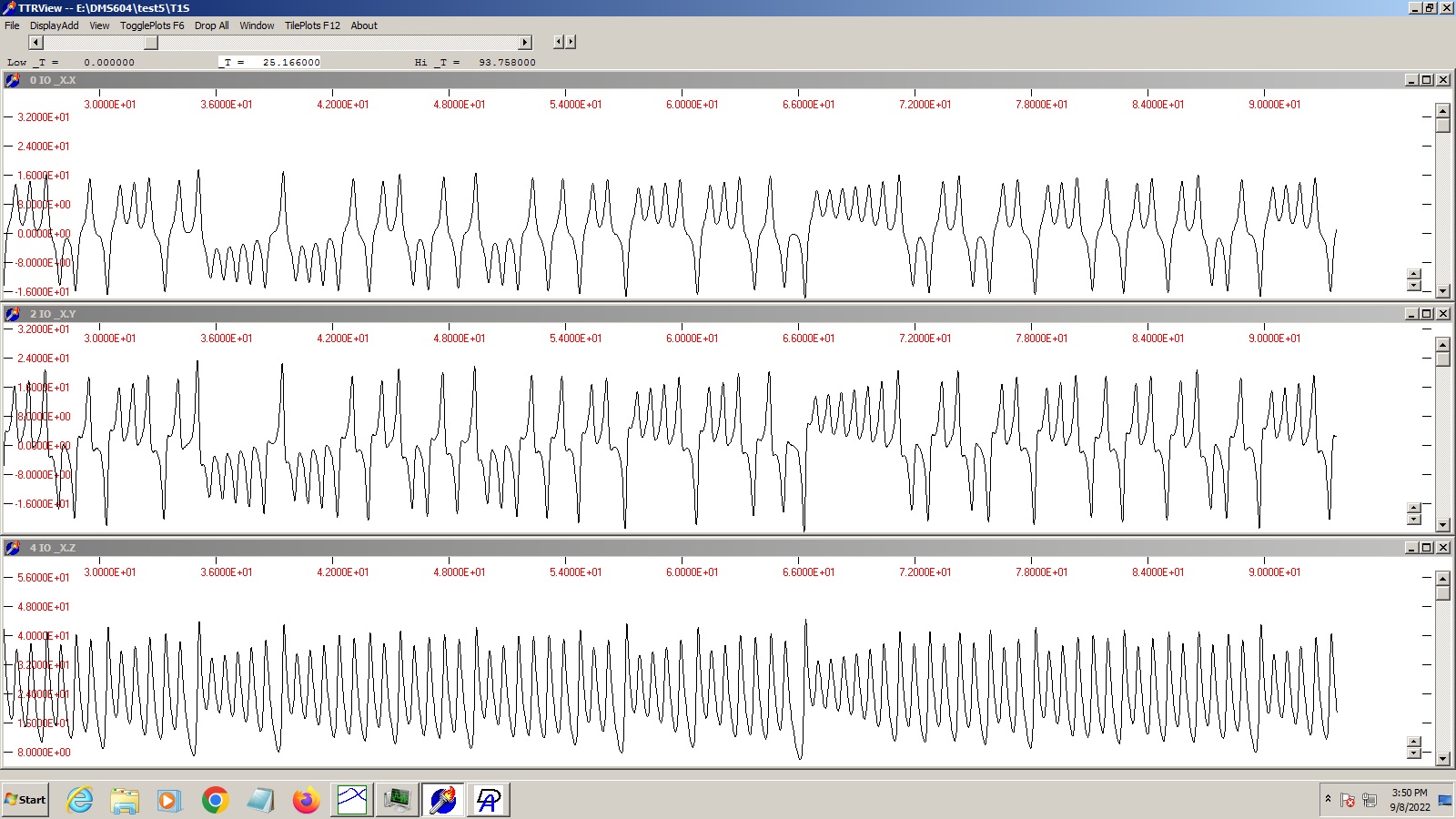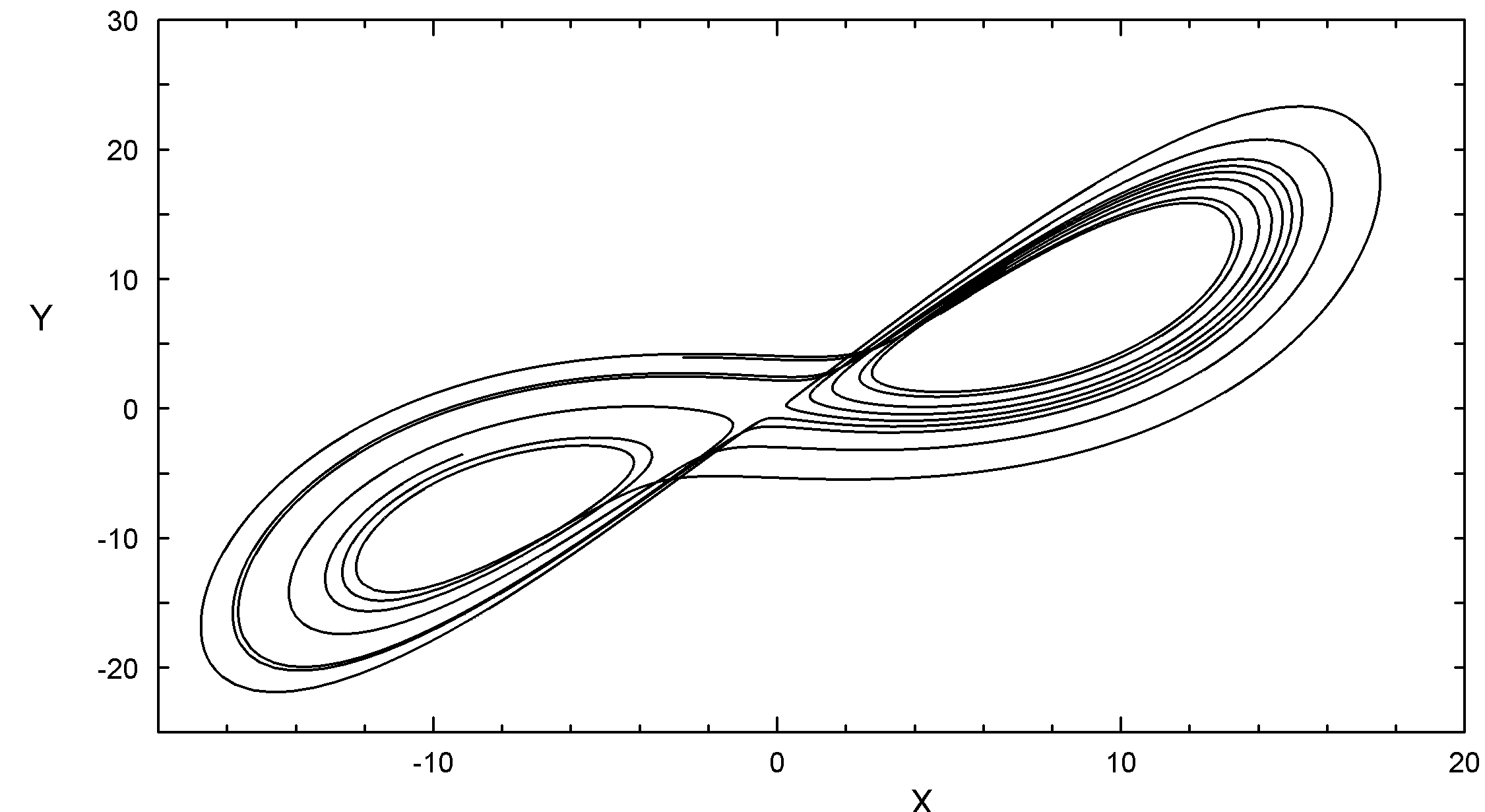This problem only requires a main module (named "SYSTEM") and is simple enough to be described by the SOSI language of DMSolver ("Single-module Only Simple Input") which the DMSolver Guide program converts for you to regular DMSolver language. The SOSI code is:
Parameters
Sigma=10; RR=28; BB=2.666667;
Equations
Tderiv(X)=SIGMA*(Y-X);
Tderiv(Y)=-X*Z+RR*X-Y;
Tderiv(Z)=X*Y-BB*Z;
end
The following is not exactly the text that the SOSI converter produces because it has been made more readable and with comments, but it is mathematically equivalent:
{ DMSolver program to compute Edward Lorenz's original "Attractor" nonlinear
dynamic problem ( J. of the Atmospheric Sciences, Vol 20., pp 130-141 (1963))}
VAR { global parameters must be defined to compiler}
SIGMA, RR, BB:DOUBLE;
procedure PARSET;
{lets the user adjust parameters with GUI menu; default values are supplied}
begin
_PARD(5,'Sigma parameter','','SIGMA',SIGMA,10.0);
_PARD(5,'r parameter','','RR',RR,28.0);
_PARD(5,'b parameter','','BB',BB,2.66667);
end;
{ Empty utility procedures are required to satisfy the linker}
procedure SETUP; begin end; { no setup action needed }
procedure TIMESET; begin end;{ no time-varying exogenously-set values }
procedure REPORT; begin end; { no report }
procedure ADDSET; begin end; { not applicable }
procedure USERBPR; begin end; { " " }
{ define equation forms--simultaneous variables have special type XVR
but inside XPROC's you treat them like 8-byte reals. }
XPROC XDCALC(VAROT XD:XVR; VARIN X,Y:XVR);
begin
XD:=SIGMA*(Y-X);
end;
XPROC YDZDCALC(VAROT YD,ZD:XVR; VARIN X,Y,Z:XVR);
begin
YD:=-X*Z+RR*X-Y;
ZD:=X*Y-BB*Z;
end;
{ define SYSTEM module=overall block of equations and variables }
MPROC SYSTEM;
VAR
XX,XXdot,YY,YYdot,ZZ,ZZdot:XVR; { define variables order not important}
begin { define block of equations-order of defs not important }
XDCALC(XXdot,XX,YY);
YDZDCALC(YYdot,ZZdot,XX,YY,ZZ);
PMSINTEG(XX,XXdot); { predefined procedure-integrate XXdot to get XX }
PMSINTEG(YY,YYdot); { etc }
PMSINTEG(ZZ,ZZdot);
end;
Details and menu clicks needed to prepare and run a DMSolver problem are all described in the DMSdoc.html file. In this case I used the default parameters of Lorenz (otherwise you get different behavior) a "range" (scaling) factor of 10 for all variables (value not important in this case) and set time parameter starting at 0 and running out to several hundred units.
Starting the TTRV program with a click, and attaching the output type TTR file from the solver, and telling it to display X, Y, and Z, and picking a time range in the middle of the solution gives:

Saving the TTR file to an EDTECH type DSF file, and telling EDTECH to plot Y vs X for a limited range of times gives the typical "Lorenz attractor" or "butterfly" pattern as dicussed in the book by James Gleick, Chaos: Making a New Science (1987).
